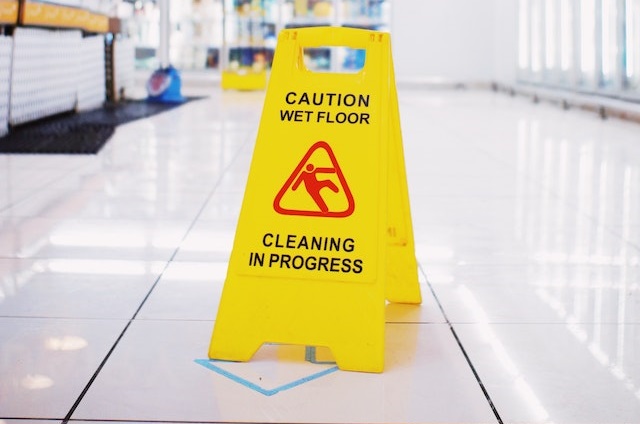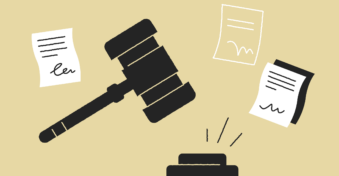Business owners use liability waivers to relinquish responsibilities for damages and losses. These documents are legally binding contracts if they meet the standards of legality and fairness. But in some cases, a liability waiver could become unenforceable by law.
In this article, we’ll explore the enforceability of liability waivers. Continue reading to discover ways of ensuring that every waiver holds solid legal ground.
When is a liability waiver enforceable?
Quick note: A liability waiver can also be called an exculpatory clause, legal release, or hold harmless clause. We’ll be using these terms interchangeably throughout the text.
Most properly crafted waivers hold legal standing in the jurisdictions where they were signed. Liability contracts between entities in different legal jurisdictions are legally applicable in the following cases:
- The contents meet the legal grounds.
A liability waiver becomes applicable across jurisdictions if it meets the benchmark for legality. In essence, the stipulations in the contract should not be against the law in any of the locales where it is administered.
- One party abdicates responsibility.
For the document to be legally binding, one of the parties to the agreement must sign their intention of relinquishing responsibility. Otherwise, the waiver is not worth the paper or digital canvas on which it was signed.
When is a liability waiver not enforceable?
Although most hold harmless agreements are binding, there are rare exceptions. Here are situations in which a liability waiver is unenforceable.
In cases of negligence
Negligence, in the broad sense, refers to a situation when one party’s indiscretion or carelessness causes damage to another entity. In legal parlance, two forms of negligence exist: gross negligence and ordinary negligence.
According to Cornell Law, gross negligence is a blatant abdication of legal responsibility that leads to significant or lethal consequences. For instance, if ordnance explodes at a shooting range and leads to casualties, the owners of the range are guilty of gross negligence.
Similarly, ordinary negligence comes as a result of carelessness that leads to minor injuries or bodily mishaps. For instance, if a weightlifter slips on a wet floor because the “wet floor” sign is not there, the gym becomes culpable for damages.

In both cases, the liability waiver will become void, and the negligent parties must take responsibility for the damages.
When the wording is intentionally ambiguous or leads to confusion
If the exculpatory clause is confusing and ambiguous, the presiding legal entity can declare it unenforceable by law.
Every contract should follow the “three Cs” of legal communication: clear, concise, and coherent. It should also be in a language that the signer can understand.
If the signer has yet to reach 18 years of age
A waiver is unenforceable if it was signed by a minor without adult supervision — and the adult should be their parent or legal guardian.
The content is against the law
If an employer convinces their staff to waive their rights to employment benefits, this contract will not be enforceable in any court. Worker’s compensation and employment claims are non-waivable rights.
Key contents of a liability waiver
Here are the compulsory components to any agreement that absolves one of liability.
- Inherent Risks — You need to outline the nature of the potential mishap in the waiver, with descriptions if possible.
- Assumption of Risk — This clause shows that the participating party is cognizant of the potential perils of the activity in which they are about to participate.
- Release Clause — This is the crux of the contract; it releases the business (owner) of all responsibility for mishaps.
- Indemnification — This clause covers every compensation you’ll get for your trouble. Indemnification could cover your legal fees if the case goes to court.
- Insurance — The insurance clause protects you from having to pay for the other party’s damages.
- Choice of Law — This clause specifies the geographical area of legality where the liability waiver holds water.
You can add other clauses to this waiver, provided it is legal, fair, and transparent.
How to make sure your liability waiver is enforceable
Errors or oversights often make a liability waiver unenforceable. Here are tips to make sure your liability release form is always binding.
Use clear language
When drawing up legal documents, most people resort to using jargon and “legalese” to add some credence to the contract. Unfortunately, this could make the contract unreadable, thereby rendering it null and void.
To avoid this problem, use simple language when writing any clause. You can also download templates online and edit them to your liking.
Use legal help
Yes, we just told you to change the contract’s wording to your liking, but you must know that drawing up your exculpatory clause entirely on your own could land you in serious trouble down the line.
Instead of taking this risk, hire an expert with an extensive understanding of the legal system to help you write and review the contract beforehand.
Make sure the signatory meets all requirements
Before presenting a document for someone to sign, make sure they understand English — or that the language of the contract is in their native tongue. If the person is a minor, you need their legal guardian to countersign the waiver.
Use legal eSignature tools
Some electronic signature tools are not legally binding because they don’t meet regulatory standards. Furthermore, some countries refuse to accept the validity of eSignatures. When signing your liability waiver, use an authenticated, certified tool like the PandaDoc Waivers app.

Conclusion
Liability waivers are enforceable in areas that handle a lot of risks and potential for damages. However, the waiver can become unenforceable if it contains stipulations and clauses that go against the law.
You also need to make sure the legal release clause is written in clear, concise language that is native to and understood by the signatory. And most importantly, you can hire legal assistance to ensure the waiver remains enforceable.


